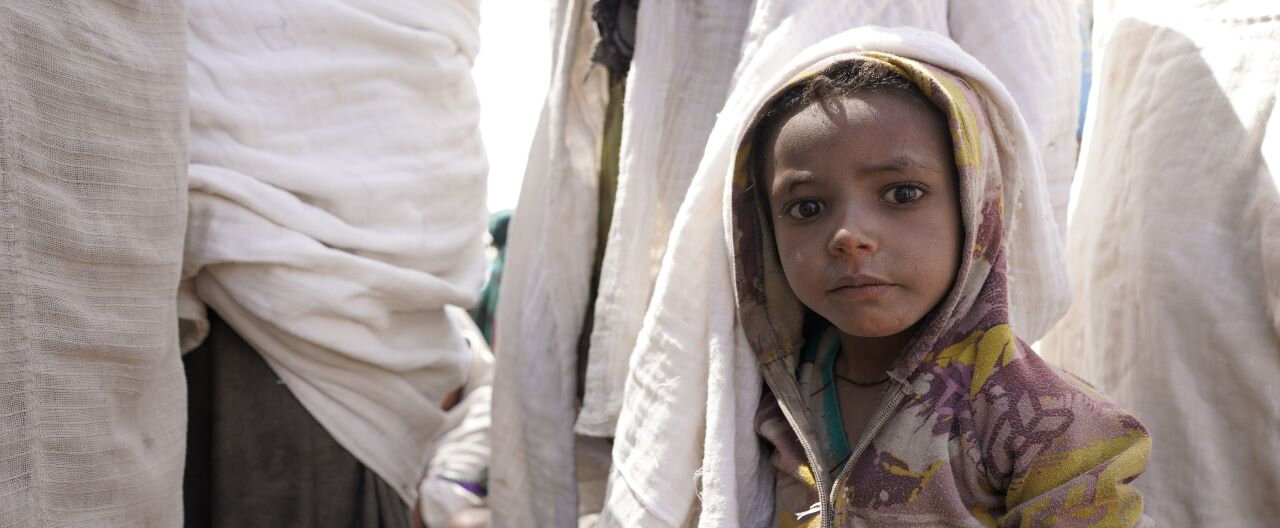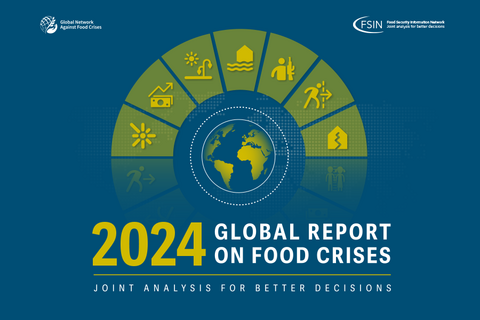Conflict, economic shocks, climate extremes and soaring fertilizer prices are combining to create a food crisis of unprecedented proportions. As many as 783 million people are facing chronic hunger. We have a choice: act now to save lives and invest in solutions that secure food security, stability and peace for all, or see people around the world facing rising hunger. 2023: Another year of extreme jeopardy for those struggling to feed their families
The scale of the current global hunger and malnutrition crisis is enormous. WFP estimates – from 78 of the countries where it works (and where data is available) – that more than 333 million people are facing acute levels of food insecurity in 2023, and do not know where their next meal is coming from. This constitutes a staggering rise of almost 200 million people compared to pre-COVID-19 pandemic levels.
At least 129,000 people are expected to experience famine in Burkina Faso, Mali, Somalia and South Sudan. Furthermore, any fragile progress already made in reducing numbers risks being lost, due to funding gaps and resulting cuts in assistance. The global community must not fail on its promise to end hunger and malnutrition by 2030.
WFP is facing multiple challenges – the number of acutely hungry people continues to increase at a pace that funding is unlikely to match, while the cost of delivering food assistance is at an all-time high because food and fuel prices have increased.
Unmet needs heighten the risk of hunger and malnutrition. Unless the necessary resources are made available, lost lives and the reversal of hard-earned development gains will be the price to pay.
But why is the world hungrier than ever?
This seismic hunger crisis has been caused by a deadly combination of factors.
Conflict is still the biggest driver of hunger, with 70 percent of the world’s hungry people living in areas afflicted by war and violence. Events in Ukraine are further proof of how conflict feeds hunger – forcing people out of their homes, wiping out their sources of income and wrecking countries’ economies.
The climate crisis is one of the leading causes of the steep rise in global hunger. Climate shocks destroy lives, crops and livelihoods, and undermine people’s ability to feed themselves. Hunger will spiral out of control if the world fails to take immediate climate action.
Global fertilizer prices have climbed even faster than food prices, which remain at a ten-year high themselves. The effects of the war in Ukraine, including higher natural gas prices, have further disrupted global fertilizer production and exports – reducing supplies, raising prices and threatening to reduce harvests. High fertilizer prices could turn the current food affordability crisis into a food availability crisis, with production of maize, rice, soybean and wheat all falling in 2022.
On top of increased operational costs, WFP is facing a major drop in funding in 2023 compared to the previous year, reflecting the new and more challenging financial landscape that the entire humanitarian sector is navigating. As a result, assistance levels are well below those of 2022. Almost half of WFP country operations have already been forced to cut the size and scope of food, cash and nutrition assistance by up to 50 percent.
From the Central American Dry Corridor and Haiti, through the Sahel, Central African Republic, South Sudan and then eastwards to the Horn of Africa, Syria, Yemen and all the way to Afghanistan, conflict and climate shocks are driving millions of people to the brink of starvation.
Last year, the world rallied extraordinary resources – a record-breaking US$14.1 billion for WFP alone – to tackle the unprecedented global food crisis. In countries like Somalia, which has been teetering on the brink of famine, the international community came together and managed to pull people back. But it is not sufficient to only keep people alive. We need to go further, and this can only be achieved by addressing the underlying causes of hunger.
The consequences of not investing in resilience activities will reverberate across borders. If communities are not empowered to withstand shocks and stresses, this could result in increased migration and possible destabilization and conflict. Recent history has shown us this: when WFP ran out of funds to feed Syrian refugees in 2015, they had no choice but to leave the camps and seek help elsewhere, causing one of the greatest refugee crises in recent European history.
WFP’s changing lives work helps to build human capital, support governments in strengthening social protection programmes, stabilize communities in particularly precarious places, and help them to better survive sudden shocks without losing all their assets.
In just four years of the Sahel Resilience Scale-up, WFP and local communities turned 158,000 hectares of barren fields in the Sahel region of five African countries into farm and grazing land. Over 2.5 million people benefited from integrated activities. Evidence shows that people are better equipped to withstand seasonal shocks and have improved access to vital natural resources like land they can work. Families and their homes, belongings and fields are better protected against climate hazards. Support serves as a buffer to instability by bringing people together, creating social safety nets, keeping lands productive and offering job opportunities – all of which help to break the cycle of hunger.
As a further example, WFP’s flagship microinsurance programme – the R4 Rural Resilience initiative – protects around 360,000 farming and pastoralist families from climate hazards that threaten crops and livelihoods in 14 countries including Bangladesh, El Salvador, Ethiopia, Fiji, Guatemala, Kenya, Madagascar and Zimbabwe.
At the same time, WFP is working with governments in 83 countries to boost or build national safety nets and nutrition-sensitive social protection, allowing us to reach more people than we can with emergency food assistance.
Humanitarian assistance alone is not enough though. A coordinated effort across governments, financial institutions, the private sector and partners is the only way to mitigate an even more severe crisis in 2023. Good governance is a golden thread that holds society together, allowing human capital to grow, economies to develop and people to thrive.
The world also needs deeper political engagement to reach zero hunger. Only political will can end conflict in places like Yemen, Ethiopia and South Sudan, and without a firm political commitment to contain global warming as stipulated in the Paris Agreement, the main drivers of hunger will continue unabated.
In 2023, hunger levels are higher than ever before

Help families facing unprecedented hunger

Leave a Reply